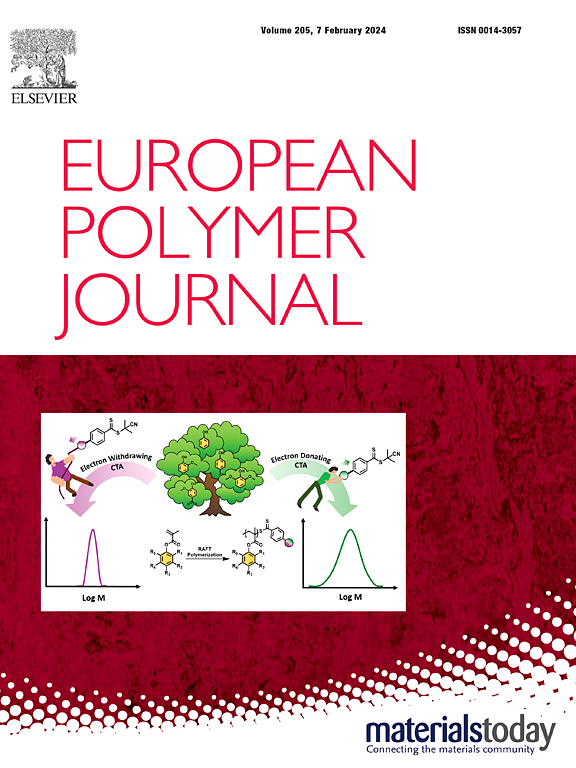Application of new photoinitiating systems based on BODIPY derivatives in long-wavelength photo-induced free radical polymerization
IF 5.8
2区 化学
Q1 POLYMER SCIENCE
引用次数: 0
Abstract
Efficient photopolymerization activated by photoinitiators or photoinitiating systems (PISs) under visible light irradiation, especially at long wavelengths, has remained as a challenging research focus. In this work, four novel boron dipyrromethene (BODIPY) derivatives with high fluorescence properties were systematically investigated as light-harvesting organic dyes, which exhibited remarkable photoinitiation capacities under long-wavelength light irradiation. Markedly, these BODIPY derivatives efficiently induced the free radical photopolymerization of acrylates under irradiation from violet-to-green light-emitting diodes (LEDs), benefiting from the construction of three-component PISs comprising an amine and an iodonium salt. The high photoreactivity of these BODIPY dyes was assessed through steady-state photolysis and excited-state fluorescence quenching analyses, while the corresponding photochemical parameters were attained by theoretical calculations under the density functional theory (DFT) method. In order to expand potential application areas, photopolymerized acrylate monomers by direct laser writing experiments using the investigated PIS, resulting in 3D patterns with smooth surfaces. high spatial resolution and significant fluorescence were successfully fabricated, providing a promising opportunity for developing efficient PIs with high fluorescence in photo-curing 3D printing area.

求助全文
约1分钟内获得全文
求助全文
来源期刊

European Polymer Journal
化学-高分子科学
CiteScore
9.90
自引率
10.00%
发文量
691
审稿时长
23 days
期刊介绍:
European Polymer Journal is dedicated to publishing work on fundamental and applied polymer chemistry and macromolecular materials. The journal covers all aspects of polymer synthesis, including polymerization mechanisms and chemical functional transformations, with a focus on novel polymers and the relationships between molecular structure and polymer properties. In addition, we welcome submissions on bio-based or renewable polymers, stimuli-responsive systems and polymer bio-hybrids. European Polymer Journal also publishes research on the biomedical application of polymers, including drug delivery and regenerative medicine. The main scope is covered but not limited to the following core research areas:
Polymer synthesis and functionalization
• Novel synthetic routes for polymerization, functional modification, controlled/living polymerization and precision polymers.
Stimuli-responsive polymers
• Including shape memory and self-healing polymers.
Supramolecular polymers and self-assembly
• Molecular recognition and higher order polymer structures.
Renewable and sustainable polymers
• Bio-based, biodegradable and anti-microbial polymers and polymeric bio-nanocomposites.
Polymers at interfaces and surfaces
• Chemistry and engineering of surfaces with biological relevance, including patterning, antifouling polymers and polymers for membrane applications.
Biomedical applications and nanomedicine
• Polymers for regenerative medicine, drug delivery molecular release and gene therapy
The scope of European Polymer Journal no longer includes Polymer Physics.
 求助内容:
求助内容: 应助结果提醒方式:
应助结果提醒方式:


